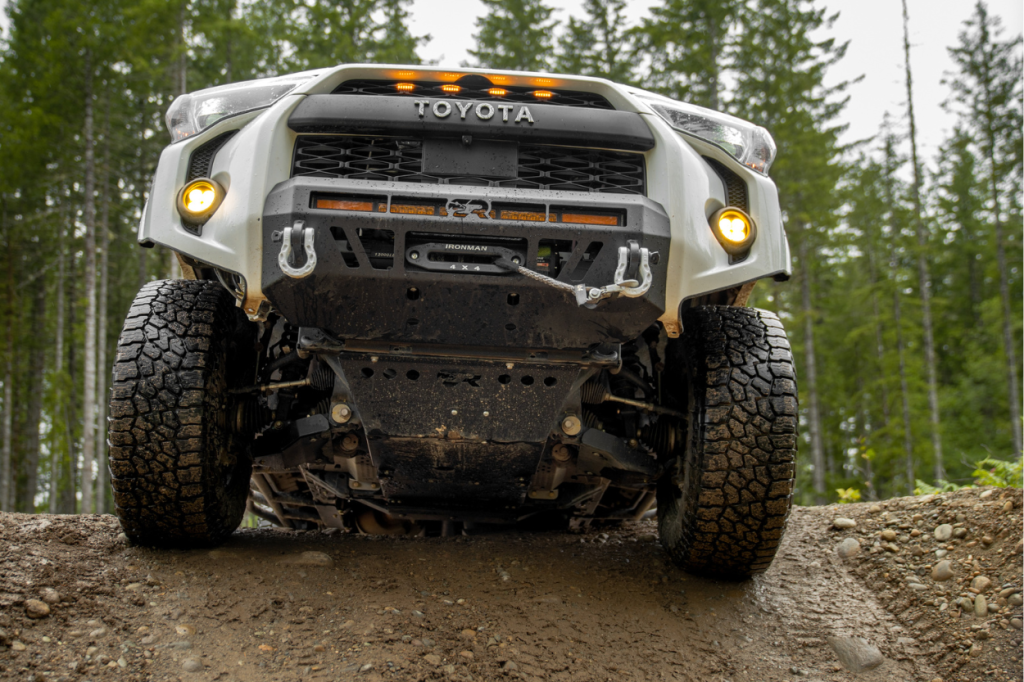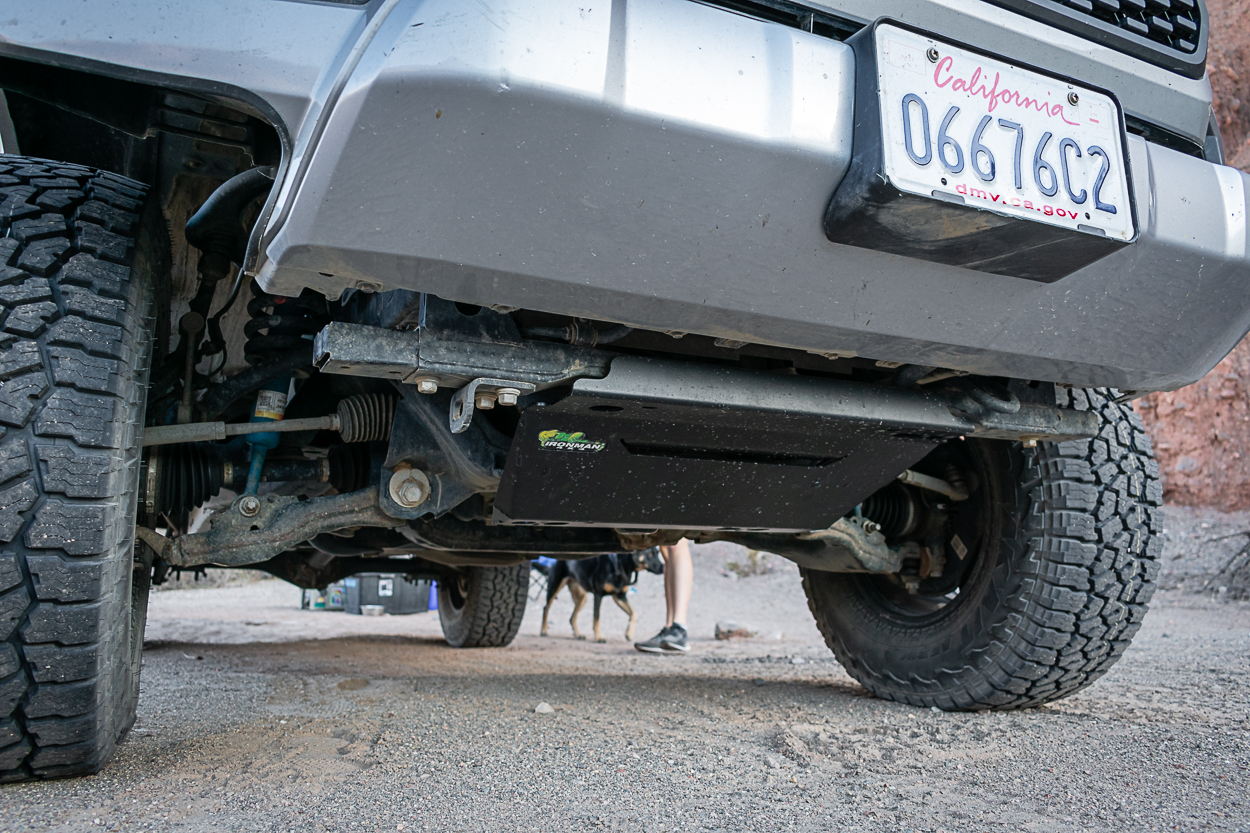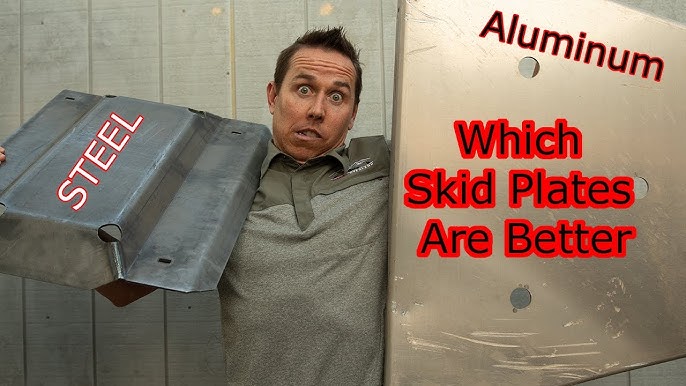Are you considering an upgrade to your vehicle’s protection but unsure which material to choose for your skid plates? The debate between aluminum and steel skid plates is a hot topic among off-road enthusiasts and everyday drivers alike.
You might be wondering which option offers the best performance, durability, and value for your hard-earned money. The choice isn’t always straightforward, and that’s where this article comes in. Imagine driving on rugged terrain, confident that the underbelly of your vehicle is shielded against rocks, debris, and unexpected bumps.
The right skid plate can make all the difference, but you need to know which material suits your needs best. By understanding the pros and cons of aluminum versus steel, you’ll make an informed decision that enhances your driving experience and safeguards your investment. So, are aluminum skid plates really better than steel? Let’s dive into the details and help you find the answer.

Credit: trail4runner.com
Material Properties
Choosing the right skid plate for your vehicle is crucial for both performance and protection. Whether you’re an off-road enthusiast or just want to ensure your vehicle’s undercarriage is safe, understanding the material properties of aluminum versus steel skid plates can help you make an informed decision. Let’s dive into the specifics.
Weight Differences
Aluminum is significantly lighter than steel. This weight difference can affect fuel efficiency and handling. Imagine taking a long trip; the lighter your vehicle, the less fuel you’ll consume. It feels like carrying a lighter backpack on a hike; you move more freely.
Steel, on the other hand, adds extra weight. While this might seem like a downside, consider how that added weight might stabilize your vehicle in rocky terrains. Steel might be the heavier choice, but it offers a different kind of balance.
Strength And Durability
Aluminum offers decent strength but excels in resisting corrosion. If you drive through wet or salty environments, aluminum won’t rust easily. Picture a beachside drive; your aluminum skid plate stays unaffected by the salty air.
Steel is renowned for its strength and durability. It can withstand heavy impacts and abrasions. You might find steel more reliable if you’re tackling tough off-road trails. Think of it as wearing rugged boots for a mountain trek; they take the hits without compromising safety.
Which material resonates with your needs? Are you more concerned with weight or with durability? Your choice could impact your driving experience.

Credit: trailtacoma.com
Cost Comparison
Choosing between aluminum and steel skid plates can affect your wallet. Understanding cost differences is crucial for making an informed decision. Let’s break down the initial investment and long-term maintenance costs of each material.
Initial Investment
Aluminum skid plates often come with a higher price tag. This is due to their lightweight nature and corrosion resistance. Steel skid plates are typically more affordable upfront. They provide a robust option without the higher cost of aluminum.
Consider your budget and specific needs. This will help you decide if the initial cost difference is worth it.
Long-term Maintenance
Aluminum skid plates require less upkeep over time. They resist rust, which reduces maintenance costs. Steel skid plates may need more attention to prevent rust and wear. Regular checks and potential treatments can add to long-term expenses.
Think about how much maintenance you’re willing to handle. This will influence your decision between aluminum and steel.
Performance In Off-road Conditions
Choosing the right skid plate for off-road adventures is crucial. Aluminum and steel are popular choices. Both materials have unique advantages. Understanding their performance helps make informed decisions.
Impact Resistance
Aluminum skid plates are lightweight. They offer decent impact resistance. Steel plates are heavier. They provide superior protection against hard impacts. Steel plates withstand rough terrain better. Their durability shines in extreme conditions.
Corrosion Resistance
Aluminum naturally resists corrosion. This makes it ideal for wet environments. Steel needs extra care to prevent rust. Regular maintenance is necessary for steel. Aluminum plates last longer without rust issues.
Installation And Compatibility
Choosing the right skid plate involves understanding installation and compatibility. Each material presents unique challenges and benefits. Aluminum and steel are two popular choices. Both offer protection, but differ in installation ease and vehicle compatibility.
Ease Of Installation
Aluminum skid plates are lightweight. This makes them easier to handle during installation. Their reduced weight means less strain on suspension components. Many aluminum plates come pre-drilled. This simplifies the installation process further. Steel plates, on the other hand, are heavier. They often require more manpower or tools. Adjustments during installation are harder with steel. This can be challenging for DIY enthusiasts.
Vehicle Compatibility
Aluminum skid plates fit a wide range of vehicles. Their designs are often universal. This makes them suitable for various models. Steel plates may require specific fittings. Their heavier nature demands stronger vehicle support. Some vehicles may not support the extra weight. This limits steel’s compatibility. Aluminum’s versatility makes it a popular choice among many drivers.
Environmental Impact
Choosing between aluminum and steel skid plates involves more than just performance and durability. Understanding their environmental impact can guide you towards a more sustainable decision. Let’s dive into how these materials affect our planet.
Recyclability
Aluminum is a champion of recyclability. It can be recycled indefinitely without losing its quality. This means your aluminum skid plate could someday become part of a new product entirely.
Steel also has impressive recycling credentials. Though it requires more energy to recycle compared to aluminum, steel recycling is widespread. Your old steel skid plate might end up as part of a car or a building.
Have you ever wondered what happens to the materials you discard? By choosing recyclable materials, you’re contributing to a circular economy. It’s a small change with a big impact.
Manufacturing Footprint
Aluminum manufacturing is energy-intensive. Although it requires more energy initially, improvements in technology are reducing its carbon footprint. These advancements make aluminum a more eco-friendly choice over time.
Steel production also demands significant energy and resources. However, it has a higher carbon footprint compared to aluminum, especially in its initial manufacturing phase. This is something to consider if you’re prioritizing environmental impact.
When you opt for materials with a lower manufacturing footprint, you’re actively reducing your carbon emissions. Isn’t it empowering to know your choices can make a difference?
As you decide between aluminum and steel skid plates, remember that each choice has a ripple effect on the environment. Which material aligns with your commitment to sustainability?
User Experiences
Aluminum skid plates offer lightweight protection, making them easier to install and handle. Steel skid plates provide stronger durability, ideal for rough terrains. Choosing between them depends on balancing weight and strength needs.
When it comes to choosing between aluminum and steel skid plates, user experiences can offer invaluable insights. Off-road enthusiasts, mechanics, and everyday drivers all share their stories, providing a diverse perspective on which material might be better suited for your needs. Let’s dive into the real-world feedback and case studies to help you make an informed decision.Feedback From Off-road Enthusiasts
Many off-road enthusiasts swear by aluminum skid plates for their lightweight nature. One user shared how their vehicle’s performance noticeably improved after switching from steel to aluminum. The lighter weight contributed to better fuel efficiency and easier handling on rugged terrains. However, some users prefer the robustness of steel, even if it means adding extra weight. A frequent off-roader highlighted that steel plates offered superior protection when traversing rocky paths. They mentioned a specific incident where a heavy impact barely scratched their steel skid plate, reinforcing their preference.Case Studies
In a side-by-side test, a group of 4×4 adventurers equipped half their fleet with aluminum skid plates and the other half with steel. Over a year of varied terrain driving, the aluminum plates showed more surface wear but no significant structural damage. Drivers appreciated the weight reduction, especially in sandy deserts where agility is key. Conversely, in swampy or wet conditions, steel skid plates emerged as the favorite. A participant noted that despite being heavier, steel resisted corrosion better than expected. This unexpected insight challenged the common belief about steel’s vulnerability to rust. What do these experiences tell you? Perhaps the choice isn’t just about the material itself but also about how and where you plan to use your vehicle. Would you prioritize weight and agility or durability and strength?Industry Trends
In recent years, the automotive industry has seen notable shifts. The debate between aluminum and steel skid plates is at the forefront. As technology evolves, manufacturers adapt to changing demands. This section explores current trends shaping these materials in the industry.
Technological Advancements
Technological progress drives change in skid plate materials. Aluminum benefits from improved production techniques. These techniques enhance its strength and durability. New alloys are emerging, making aluminum more competitive. Steel also sees advancements, particularly in corrosion resistance. But, aluminum’s lightweight nature remains a significant advantage. Technology continues to refine both materials, influencing industry preferences.
Market Preferences
Consumer choices reflect broader market preferences. Many drivers prioritize fuel efficiency and performance. Aluminum skid plates offer a lighter alternative. This results in better vehicle performance and fuel economy. Steel skid plates still hold a loyal customer base. Some prefer steel for its rugged reputation. But, market trends indicate a growing shift towards aluminum. As preferences change, manufacturers adjust their offerings accordingly.

Credit: www.youtube.com
Conclusion
Choosing between aluminum and steel skid plates depends on your needs. Aluminum offers lightweight protection. Ideal for those prioritizing fuel efficiency. Steel provides durability and strength. Better for rough terrains and heavy-duty use. Consider your vehicle and driving conditions. Aluminum suits casual, less rugged adventures.
Steel fits intense, off-road journeys. Both have their advantages. Think about cost, weight, and resilience. Make the choice that aligns with your lifestyle and vehicle demands. Both materials ensure your vehicle’s undercarriage stays safe. Select wisely for peace of mind on the road.
